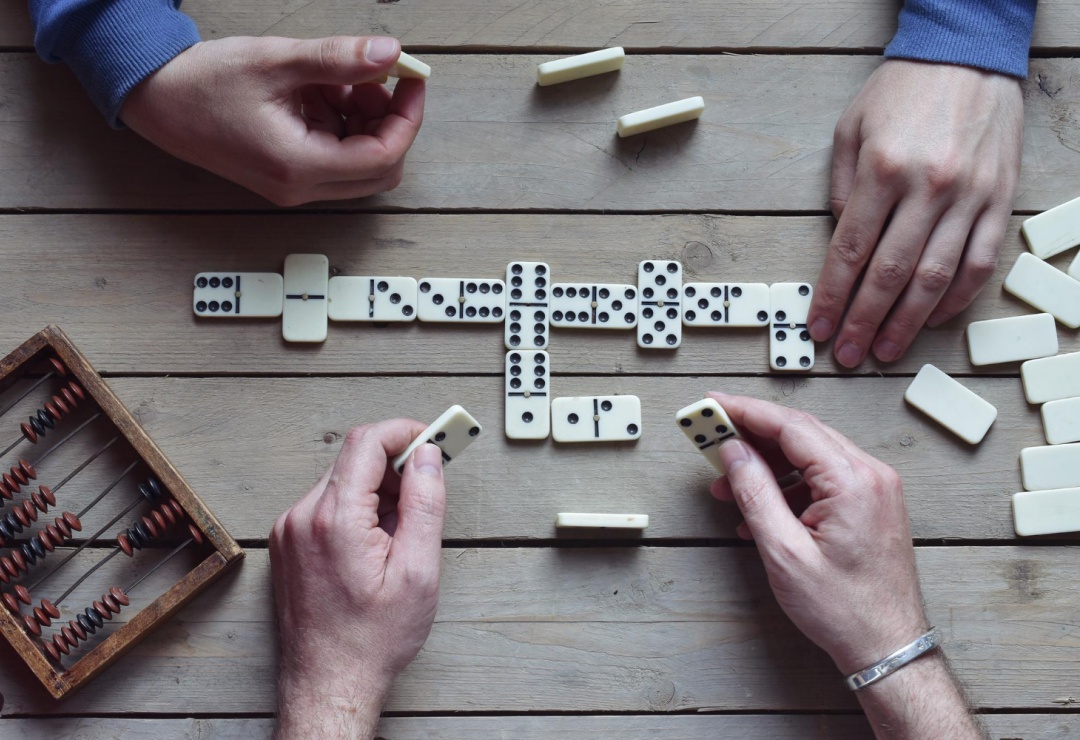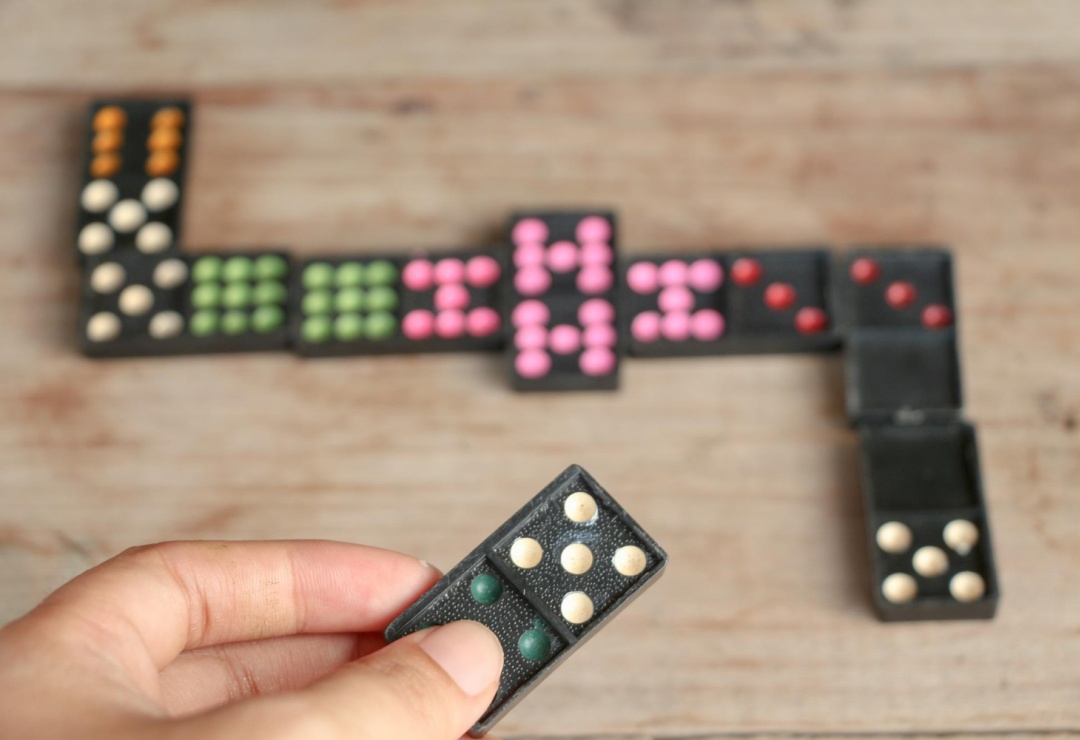14 Advanced Domino Strategies
Advanced domino strategies are fundamental to becoming an expert player and mastering this fascinating board game that combines skill, cunning, and strategic thinking. In this article, we will explore in depth the techniques and tactics that will help you significantly improve your level of play.
Dominoes: Beyond Chance
Dominoes transcends the simple placement of tiles, becoming a mental challenge that requires observation, calculation, and planning. The difference between a casual player and an expert lies precisely in mastering advanced domino strategies, which allow players to anticipate moves, control the board, and maximize the probability of victory.
Advanced Domino Strategies
Mastering advanced strategies allows you to anticipate plays, control the game's rhythm, and maximize your chances of victory. These techniques are especially crucial in tournaments and competitive matches where every decision can determine the final outcome.
1. Management of Doubles and Heavy Tiles
Doubles are critical tiles that must be played strategically at the beginning of the game. This rule is especially important with high doubles such as 6-6 or 5-5, as retaining them can result in a significant disadvantage. The reason is twofold: first, doubles have fewer opportunities to be played since they require the same number at both ends; second, if the game becomes blocked, being stuck with a high double means points for your opponents.
For example, dying with a double six in hand represents 12 points, which can be the difference between winning or losing a game to 100 points.
2. Mathematical Board Control
Mathematical control goes beyond simply counting tiles. It requires understanding how each play affects the probability of subsequent ones. In a game of 28 tiles, each number (from 0 to 6) appears 8 times. When you observe that 6 tiles with the number 5 have been played, and you have one, this means there is only one tile with 5 left in play. This information allows you to calculate the exact probability that an opponent has the last tile, determine if it's worth keeping your tile with 5 for a later moment, and plan blocking strategies based on this scarcity of numbers.
3. Advanced Blocking Technique
Effective blocking isn't simply about closing off numbers. It's a strategic process that begins from the first plays. When you identify that an opponent passes with certain numbers available on the table, you must mentally record which numbers they're missing, create situations where these numbers are the only options, and maintain tiles that allow you to continue the block.
For example, if you notice that an opponent passes when there's a 4 available and you have a 4-3 and a 4-2, the correct strategy is to play the 4-3 first to maintain control over the 4, observe if other players have tiles with 4, and use the 4-2 to extend the block when it will be most effective.
4. Game Reading and Psychology
Game reading is a complex skill that requires attention to multiple factors. When a player repeatedly examines the tiles on the board before passing their turn, this indicates they are looking for a specific connection.
For example, if a player always plays quickly when there's a 5 available but hesitates with 3, we can deduce that they have more tiles with 5 than with 3. This information should be used to create situations where the opponent is forced to play at a disadvantage. The key lies in maintaining a mental record of these patterns and using them to predict each opponent's future plays.
5. Count Manipulation
Effective count manipulation requires understanding how each play affects the total board score. This technique is based on the principle of addition, where each end of the board represents a point of manipulation.
For example, if the ends are 6 and 5 (sum 11), and you have the option to play either a 6-2 or a 6-3, playing the 6-2 reduces the count to 7, while playing the 6-3 maintains the count at 8. The decision will depend on the remaining tiles in your hand, your opponents' playing style, and the current stage of the game.
6. Tempo Control
Tempo control dictates the pace of the game from the early phase, where you need to establish a rhythm that favors your strongest tiles and forces your opponents to play at your speed. If you have a sequence like 6-4, 4-2, 2-1, you can control the pace by playing these tiles in a way that forces your opponents to adapt to your strategy. In the mid-game, varying the tempo becomes crucial. Alternating between fast and slow moves confuses opponents and prevents them from predicting your hand.
7. Strategic Sacrifice
Strategic sacrifice requires long-term vision and precise calculation. This technique involves determining which tiles can be sacrificed without compromising your position, calculating the future benefit of each sacrifice, and identifying the optimal moment to make it.
For example, if you have a 6-1 and a 1-1, sacrificing the 6-1 first may seem risky due to the exposed points, but it allows you to maintain control of the number 1 and keep a double for critical moments. The key is to calculate the true value of each sacrifice and ensure that the future advantage outweighs the immediate cost.
8. Closing Strategy
An effective closing strategy starts with planning from the beginning of the game. You need to identify combinations that could lead to a favorable closing and hold onto the key tiles that allow you to execute it.
For example, if you control the numbers 3 and 4, you can aim to create a situation where these numbers are the only ones left on the board. The ideal moment to close is when you hold the lowest tiles and have identified that your opponents have high tiles that they won't be able to play.
9. Hand Optimization
An effective management of your starting hand determines the entire course of the game. When you receive your tiles, the first step is to identify potential sequences. For example, if you have 6-4, 4-3, 3-2, this sequence allows you to play three tiles consecutively. However, the decision of when to start this sequence depends on several factors. If you also have a 2-2, you might begin the sequence to hide that you have the double, maintaining a strategic advantage for later. The key is to maintain a balance between high and low tiles throughout the game, ensuring that you have options to play aggressively or defend as the situation demands.
10. Scoring Strategy
Score control goes beyond simply minimizing the points in your hand. In a game to 100 points, for example, the strategy changes depending on your position. If you’re leading by 30 points or more, you should prioritize defensive control: keeping tiles that allow you to block moves and prevent your opponents from closing the game with an advantage. On the other hand, if you're behind, you need to take calculated risks, such as holding onto heavy tiles that allow you to force situations where you can score significant points. The key is to constantly calculate not just the immediate points but also the potential scoring opportunities in the next two or three moves.
11. Zone and Territory Control
Mastering specific areas of the board requires meticulous planning. This strategy involves creating zones where you have multiple playing options while limiting those of your opponents. For example, if you control most of the tiles with 4 and 5, you can create a zone where these numbers dominate. This allows you to anticipate moves and force your opponents to play in other numbers where you have blocking plays prepared. The effectiveness of this strategy increases when you can identify which numerical zones are weak in your opponents' hands, allowing you to expand your control into those areas.
12. Psychological Pressure Technique
Psychological pressure in dominoes goes beyond simple intimidation tactics. This strategy involves creating situations that force your opponents to make decisions under stress.
For example, if you identify that a player struggles with certain numbers, you can manipulate the board to make those numbers appear frequently at the ends. If you notice that an opponent avoids playing with the number 2, and you have several tiles with 2, you can create situations where they must choose between passing repeatedly or revealing their weakness. This constant pressure often leads to mistakes that you can capitalize on.
13. Chain Strategy
Chain strategy is a sophisticated technique that involves creating predictable sequences for your opponents, but with a hidden trap. For example, if you have the tiles 6-4, 4-2, 2-5, and 5-3, you can start a sequence that appears predictable with 6-4 and 4-2, leading your opponents to assume you have no other options. However, by preparing the unexpected connection with 2-5 and 5-3, you can surprise them when they’ve committed their tiles based on incorrect assumptions.
14. Information Control
Strategic handling of information is crucial in advanced domino strategies. This technique involves controlling what information you reveal and when you reveal it.
For example, if you have all the tiles of number 3, you should not reveal this control immediately. Instead, play your tiles in such a way that it seems like you have a normal distribution of numbers. Once your opponents have committed their strategies based on this false information, you can reveal your full control of the number 3, forcing them to reorganize their plans when it is already too late.
Continuous Improvement
Advanced domino strategies require constant practice, sharp observation, and analytical ability. The combination of these techniques, along with accumulated experience, allows you to develop a sophisticated and effective playing style. True mastery of the game is achieved when these strategies become second nature, allowing you to make quick and accurate decisions on every turn.
Blog

How to Play Dominoes with 2 Players
Learning how to play dominoes with 2 players is an excellent way to experience this classic tile game. The one-on-one format creates an intimate battlefield where strategy meets skill, offering a per…

How to Play All Fives Dominoes: Game Rules
All Fives is one of the most popular variations of the traditional game of dominoes. This version offers an experience that combines classic elements with its own scoring system that encourages strat…











